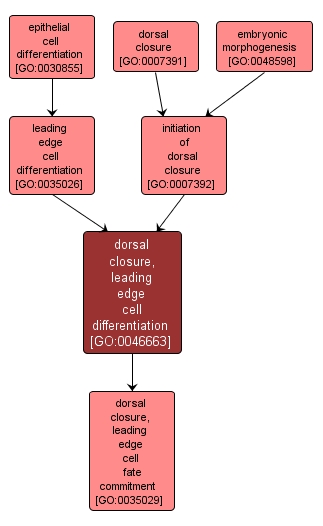GO TERM SUMMARY
|
| Name: |
dorsal closure, leading edge cell differentiation |
| Acc: |
GO:0046663 |
| Aspect: |
Biological Process |
| Desc: |
The process whereby a relatively unspecialized cell acquires specialized features of a leading edge cell, the dorsal-most cells of the epidermis that migrates during dorsal closure. |
|

|
INTERACTIVE GO GRAPH
|














